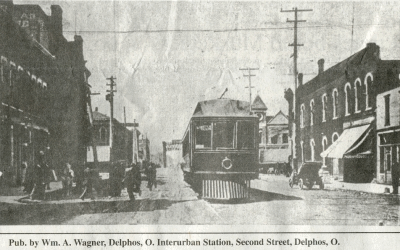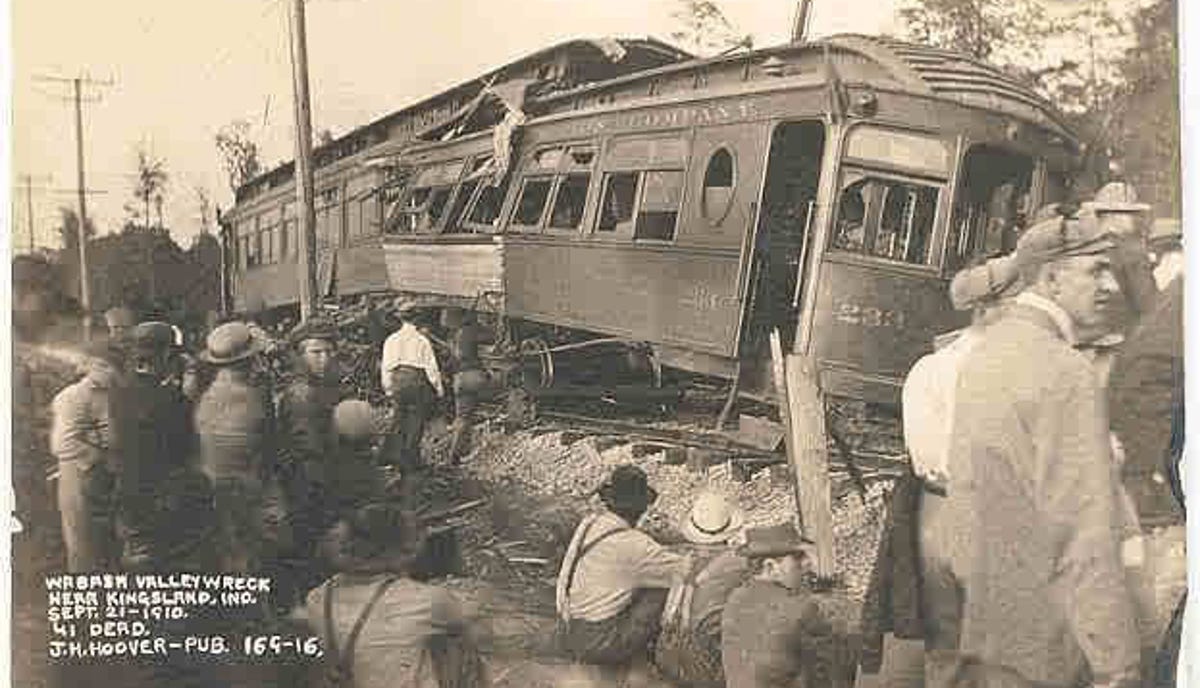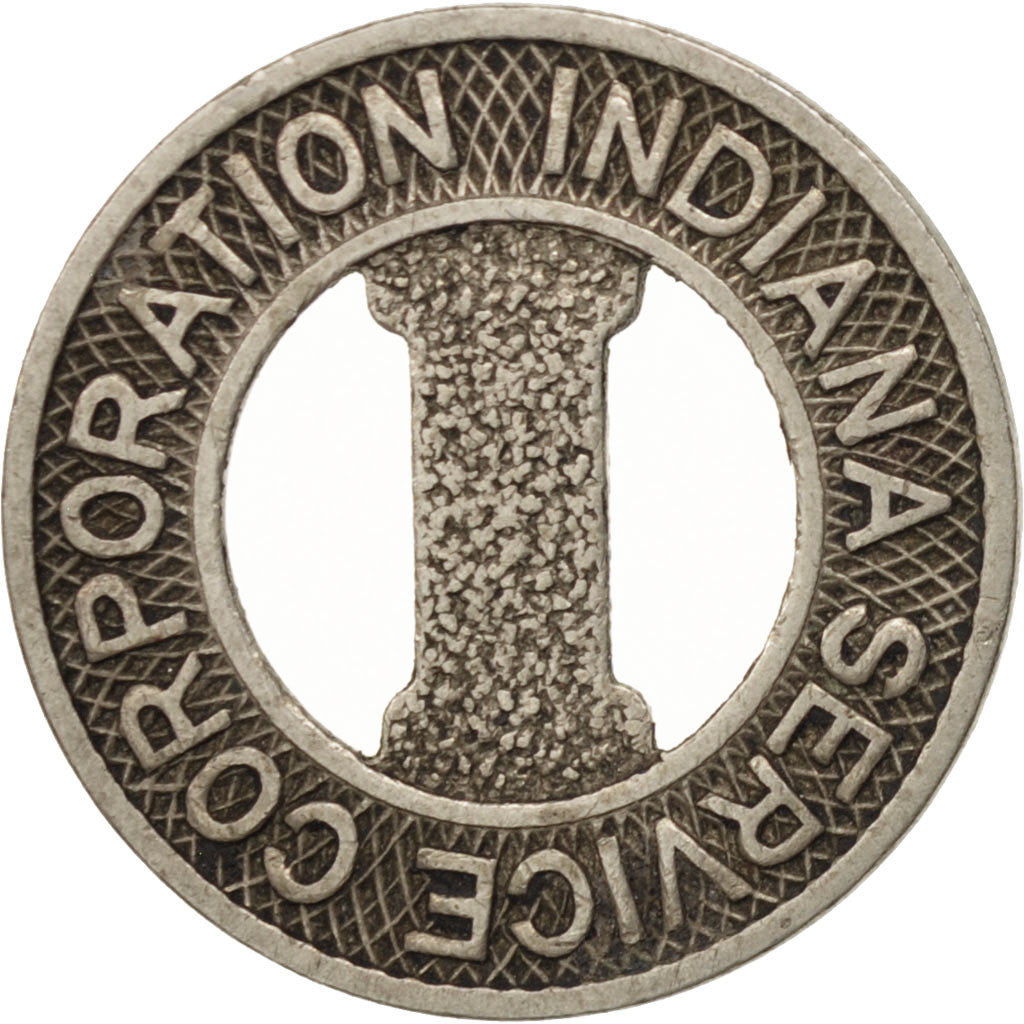-----
| An open electric streetcar from the 1890s, bound for Clinton Street and Walton Avenue. (Allen County Public Library) |
 |
| An early Lima Electric Railway converted horsecar, 1893. (The Lima News) |
Like plenty of emerging streetcar lines prior to 1900, Fort Wayne's street railway ventures began in the horsecar business. At the time, the town's near-50,000 residents were made up primarily of German and Irish railroad workers and manufacturers. It was a testament to the town's importance to the automobile that the first-ever gasoline pump was installed in Fort Wayne in 1885 (just one year before Karl Benz created his Patent Motorwagen), but that did not stop prospective transit businessmen to set up shop.
 |
| The C.L. Centlivre Brewing Company, with the now-electric streetcar on the lower right. (Fort Wayne Beer) |
The first company to begin operations was the Citizens Street Railroad Company, formed in 1872 to provide local horse-drawn service on Calhoun Street. This company lasted a good decade-and-a-half until it was sold, in 1887, to the Fort Wayne Street Railroad Co. The main competitor at this time was the C.L. Centlivre Street Railway, which provided horse car service to the local brewery in the Spy Run community. In 1892, both lines introduced electric streetcar service, and by 1895, both companies ceased to exist as the Fort Wayne Electric Railroad Co. took over and converted all city lines to electricity. Further consolidations resulted in the Fort Wayne Traction Company (FWTCo) organized to run all the local city lines, including the Lakeside Electric Railway on Columbia Street.
| An electric "summer" style converted horsecar (with open sides) trundles down a Fort Wayne street during the town's centenary celebrations. The arch reads the town's namesake, "Anthony Wayne". (Allen County Public Library) |
 |
| Fort Wayne and Wabash Valley No. 504 in operation, preserved at the Illinois Railroad Museum, in 1997. (Joseph Testagrose) |
In 1901, the FWTCo branched out into the interurban market by building a line to Huntington, IN, some 30 miles southwest of Fort Wayne. The aptly-named Fort Wayne & Southwestern Traction Company was considered separate from FWTCo, but by 1904, the companies merged to become the Fort Wayne & Wabash Valley Traction Company (FW&WV). The railroad's infrastructure was notable, as the line out to Lafayette was constructed out of the tow-path of the long-obsolete Wabash & Erie Canal (which was quickly made obsolete when railroads arrived in Fort Wayne in 1854). Many bridges and overpasses also lined the routes, crossing the Wabash River and leaping over local heavy-rail operations like the Wabash Railroad. One of the more notable lines was the 65-mile high speed service southeast to Lima, Ohio, which paralleled the Pennsylvania Railroad line between Delphos, OH, and Convoy, IN. Fares cost only 50 cents to travel 25 miles, and Fort Wayne became a major hub of "light rail" in Indiana.
 |
| The Delphos, OH interurban station on the Lima interurban line, early 1900s. (Delphos, Ohio History) |
1910 proved to be the worst year for the FW&WV, so much that it altered the company's fortunes, and name, forever. The first incident was known as the "Convoy Horror", which occurred in the early hours of Easter Sunday, March 27. That day, westbound Car No. 82 failed to heed a train order to move into a siding at Van Wert station and let extra Express Car No. 199 through. Instead, motorman Oscar Stewart and Conductor R.C. Treastor of Car No. 82 charged ahead and shot past Convoy station. At 6:41 AM, local time, it struck Car No. 199 in a violent, fiery crash. Both cars suffered heavy damage due to their wooden construction, and motorman J. Pearl Pheron (who was driving Car No. 199) was "roasted to death" as he was trapped in his now-crushed cab. Of the 82 passengers on Car No. 82, 7 were injured but miraculously, both Motorman Stewart and Conductor Treastor emerged unscathed. Both were found guilty of gross negligence and the railroad endured an already shaky reputation, one shared by many single-track interurbans of the time.
 |
| The aftermath of the 1910 Kingland Wreck that ended the Fort Wayne & Wabash Valley. This also showed the danger of wooden cars on a high-capacity interurban line. (The Indy Star) |
The worst accident, perhaps in all US mass transit history, occurred just six months later and this successfully brought down the FW&WV for good. On September 22, 1910, a south-bound interurban train driven by motorman B.T. Corkwell struck a northbound train in Kingsland, IN, just 19 miles south of Fort Wayne. Due to the wooden nature of the passenger cars, both telescoped violently into each other as they hit at speed and 41 people, including both motormen, died on impact. According to superintendent Frank I. Hardy, blame was squarely put on Motorman Corkwell ignoring the block system on the single-track Bluffton line. The public quickly saw this as the worst interurban disaster in American history and took their patronage elsewhere. FW&WV responded by reorganizing itself as the Fort Wayne & Northern Indiana Traction Co. (FW&NIT) by the next year, hoping to shed any perceived unsafetiness.
 |
| A FT&NIT Rules and Regulations book from September 1, 1911. (Mark Vogel) |
The railroad's fortunes stabilized after the reorganization, and by that time there were fifteen streetcar lines criss-crossing Fort Wayne. The heavier focus on streetcar lines meant the FW&NIT tried anything to modernise their gaggle of pre-1900s streetcar lines, as interurban ridership lagged following the 1910 wrecks. As the "Fort Wayne & Indiana Tration Company", the city turned to purchasing new trolley cars and testing out an experimental bus service on Fort Wayne's west side. Hilariously, or perhaps morbidly hilariously, it was deemed unprofitable and quickly discontinued. Considering how primitive motor buses were at the time, coupled with the already-existing streetcar infrastructure, a new form of transportation might not have been the wisest financial decision. Indeed, this most likely led the FW&NIT to fail by 1919 and be purchased by the Indiana Service Corporation (ISC) in 1920.
 |
| A transit token from the Indiana Service Corporation. (Numi's Corner) |
Under the ISC, the streetcars and interurbans now found a utilities company to help subsidise their power generation. Prior to purchasing the FW&NIT, ISC was involved in the power company and natural gas business along with the Northern Indiana Power Company and the Interstate Public Service Company. Natural gas wells discovered in the 1890s helped fuel Indiana's status as a keystone in American utilities holdings, which then fueled interurban and streetcar development. Transit tokens emblazoned with the names of the new owners were quickly spread as ISC further expanded their interurban holdings by purchasing two more lines (Fort Wayne & Northwestern and the Marion & Bluffton Traction Company) as well as more modern interurban equipment. Eventually, the company was sold to Samuel Insull's Midland Utilities by the end of the 1920s, and by 1930 it was merged into the Indiana Railroad interurban conglomerate.
| A builder's photo of St. Louis-built streetcar No. 532, which was built and delivered in 1923. It worked until 1947, when all streetcars were removed from service. (Allen County Public Library) |
At the more local level, Fort Wayne residents were pleased to find that their local public transit was doing its best to modernize their rolling stock. Samuel Insull's shrewd eye emphasized the passenger attraction to ride in comfort and modern style, so under his brief ownership, much of the ISC rolling stock was replaced or rebuilt. Gone were the 1905 and 1906-vintage wooden interurban cars built by Cincinnati car company, replaced by "Class 400" steel interurban cars from the St. Louis Car Company. The streetcar fleet was also refurbished (or replaced) by the St. Louis Car Company and mostly resembled either the Perley A. Thomas cars or the Brill “Double Birneys”. Along with the other interurban cars mentioned last week, these cars became iconic in the eyes of Fort Wayne residents and fondly remembered in their bright orange and green livery.
| The very last streetcar to run on the West Jefferson Street line, May 16, 1939, at 1:15PM. The tracks were quickly removed following the line's closure. (Allen County Public Library) |
| Motor and trolley buses surround an ISC streetcar at the Fort Wayne GE plant, waiting for the day to let out and for the workers to go home. (Allen County Public Library) |
Following the intense history of the Indiana Railroad, cracks began to appear that threatened the streetcar's dominance in Fort Wayne. Starting on May 16, 1939, the West Jefferson line (Route Number 2, which had been a streetcar line since 1872) was replaced by a motorbus. This time, the larger capacity, reduced operator need, and cheaper maintenance enticed the city of Fort Wayne to invest in more buses. The No. 8 "Centlivre" line (the brewery line) was converted to buses the following year, on March 3, 1940, then the Brooklyn/Taylor No. 9 line on July 7. The biggest boom came that very same summer when almost all of the Fort Wayne lines were converted from streetcar lines to trolley buses, with new buses by J.G. Brill arriving between 1940 and 1941. By 1947, the last streetcar lines (Broadway No. 1, Creighton No. 7 and South Wayne, all dating back to even before the 1890s) shut down in favor of trolley buses. By 1960s, these trolleybuses were themselves replaced by motor buses.
 |
| The old Fort Wayne & Wabash Valley powerhouse in Fort Wayne, now a children's science museum. The "City Light and Power" denotes the plant was used for public electricity after the railroad closed for the night. (TripAdvisor) |
Following the shutdown of the ISC in 1947, public transit operations in Fort Wayne were sold to a private company named Fort Wayne Transit. This company lasted until 1967, when it too was considered unprofitable to operate privately. Under the Urban Mass Transportation Administration, Fort Wayne was granted enough federal money to buy the assets of Fort Wayne Transit and operate it as the Fort Wayne Public Transit Cooperation in 1968. The company is now known today as Citilink and much of its current bus lines cover the old streetcar stomping grounds. Many bits and pieces of the Fort Wayne Streetcar still exist today in varying states of reuse and operation. The original Fort Wayne power station, which opened in 1907, now hosts the Science Central museum, and different cars survive in various states from the Indiana Railroad's ownership. Do not be mistaken though, Fort Wayne is still a railroad town through and through, and it may very well soon have an interurban once again...
 |
| Oh yeah, and this also lives in Fort Wayne too. Was even built at Lima! Maybe we should put a trolley pole on it... (Jonathan Lee) |
-----

No comments:
Post a Comment